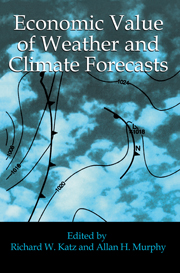1 - Weather prediction
Published online by Cambridge University Press: 27 October 2009
Summary
History and introduction
The public tends to have certain misconceptions about the nature of research on weather prediction. It is not that the general populace is of the opinion that weather prediction is a field so developed and accurate that research is not necessary. Nor is it surprising to most that modern weather prediction makes heavy use of the most advanced computers available. Rather, it is the technique of prediction that is most unexpected to the nonspecialist. Most often it is supposed that a large, powerful computer is used to store an archive of past weather from which the most similar analog of the current weather is utilized to form a prediction of the future weather. While variants of such statistical techniques of prediction are still in use today for so-called extended-range predictions, the most accurate forecasts of short-range weather are based in large part on a deterministic application of the laws of physics. In this application, the computer is used to manipulate that vast amount of information needed to effect the solution of the equations corresponding to these physical laws with sufficient accuracy to be useful.
The recognition that the physical laws embodied in Newton's laws of motion and the first and second laws of thermodynamics could be applied to the problem of weather prediction has been attributed to Bjerknes (1904). It was only at the end of the nineteenth century that the application of Newton's laws to a compressible fluid with friction and the application of the empirical laws of the thermodynamics of an ideal gas could be joined to form a closed set of predictive equations with the same number of equations as unknowns.
- Type
- Chapter
- Information
- Economic Value of Weather and Climate Forecasts , pp. 1 - 18Publisher: Cambridge University PressPrint publication year: 1997
- 4
- Cited by



